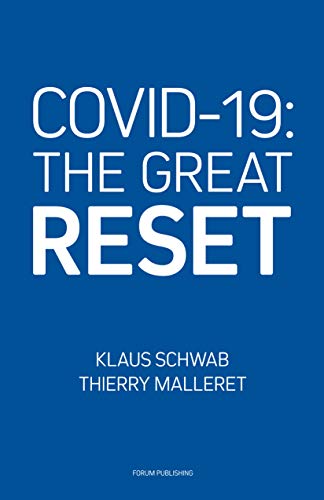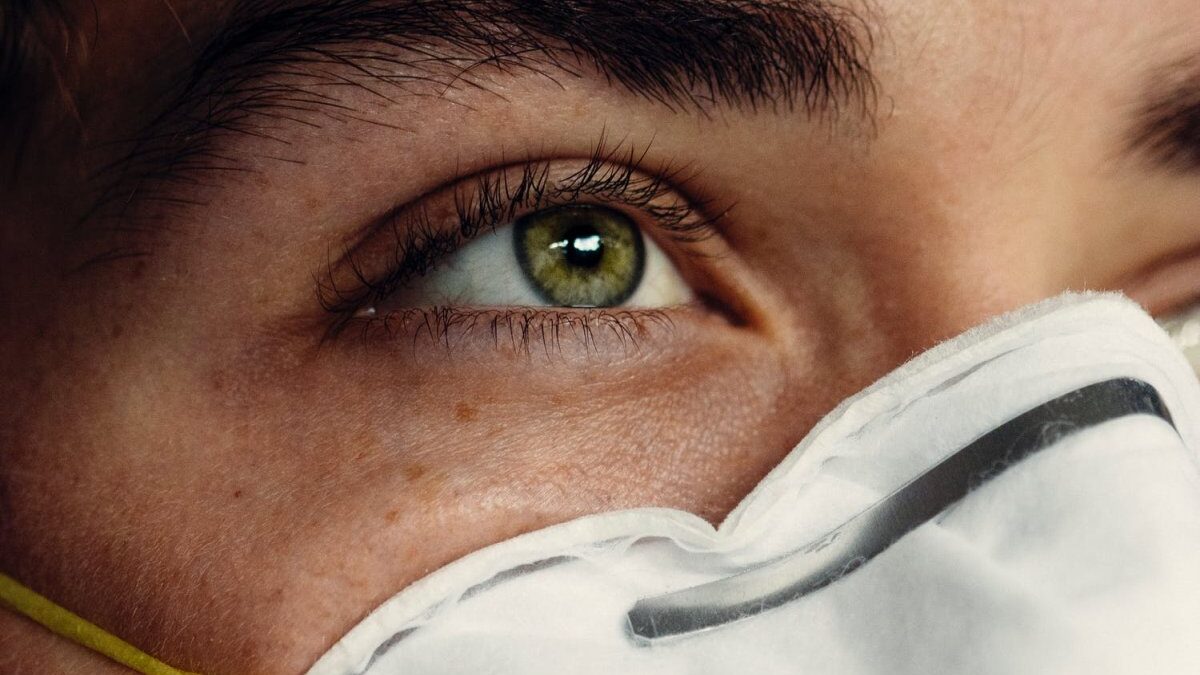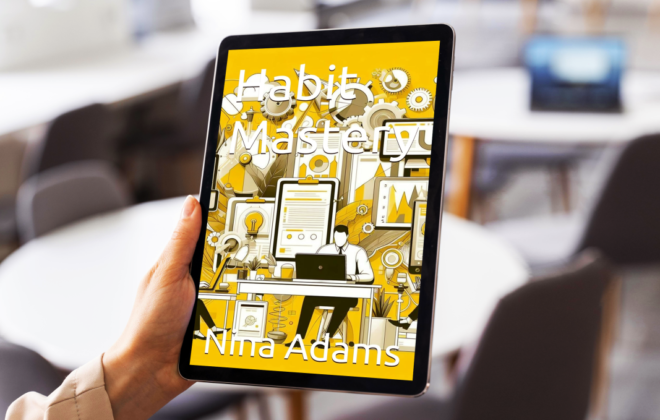Top 10+ Non-Fiction COVID-19 Books For 2023 – What We Learned?
As the novel coronavirus Covid-19 finally seems to step back from our life — hence still provides a huge number of cases in 2023 — we are finally in position to gather some takeaways of this virus, which caused 6,700,000+ deaths worldwide. We collected the most important COVID-19 books, that describe the origins, social and health implications of the pandemic.
COVID-19 doesn't dominate headlines anymore, but the story won't end here. From scientific studies to journalistic investigations to personal memoirs, books offer readers knowledge and insights that can help them understand how to protect ourselves from the next potential pandemic.
In our earlier article, we already tried to collect the most important unbiased facts about the pandemic. Now, here are the best non-fiction COVID-19 books both for adults and children.
What Are The Best COVID-19 Books From Post-Covid and Educational Point of View?

The COVID-19 Butterfly Effect, by Maya Allura (2022)
The COVID-19 Butterfly Effect is a motivational guidebook that explores the impact of the pandemic on global social, healthcare, economic, educational, and food systems. The book or audiobook aims to empower readers with information that will help them make better decisions and improve their lives, as well as inspire them with stories of resilience and hope. The author notes that while the pandemic brought on many negative consequences, studies show that 70% of people have experienced at least one positive effect of the pandemic, and this book seeks to help readers become part of this statistic.
Inside the book, readers will find a comprehensive look at Covid-19, including how it affected legislation and the restrictions that placed the world at a standstill. The book also delves into the social impacts of the pandemic, how it changed the educational sector, and ways in which the healthcare system had to adapt to maintain livelihoods. Additionally, readers will learn how quarantine influenced family dynamics, fostered personal growth, and affected lives and livelihoods around the globe. The book concludes with a look toward the future and examines whether we have truly recovered, how we are prepared to respond, and whether we will remain resilient.
Overall, the book aims to equip readers with the knowledge needed to understand Covid-19 and how it changed the world, and to embrace the changes and fully adapt to the new normal.

Lessons from the Covid War, by Covid Crisis Group (2023)
This post Covid book is a report from 34 experts on America's response to the pandemic. It highlights how the pandemic was treated as an unavoidable natural catastrophe by national leaders, leading to a cycle of panic and neglect. The book aims to answer questions about what happened during the pandemic, why it happened, and how America can do better next time. It emphasizes that there will be future global emergencies, and Americans need to learn hard truths, build on what worked, and come together to prepare for them.
The book praises the ingenuity and dedication of Americans in improvising to fight the pandemic but notes that they struggled with systems that made success difficult and failure easy. It emphasizes that America's scientific knowledge has run far ahead of its organized ability to apply it in practice.
The authors' intention is to cut through the overwhelming amount of information related to the pandemic and provide plain-spoken and clear-sighted insights into what went wrong and what can be done better in the future.

How to Prevent the Next Pandemic, by Bill Gates (2022)
How do we intend to prevent a new plague from killing millions of people and dampening the global economy? Can we even expect to come close to accomplishing that?
Bill Gates thinks that the answer is yes, and in his book he lays out clearly and convincingly what the world should have learned from the COVID-19 crisis and what all of us can do to prevent future crises like this.
Not only does he show us that the world's nations, working in conjunction with one another and with the private sector, can prevent another COVID-like epidemic. But he also shows how all respiratory ailments, including the flu, can be eradicated.
Gates thoughts inspires us that there is real hope to avoid the next pandemic if we and our countries act cleverly.

Covidians and Covidology, by Dr. Yasser Negm (2020)
This is perhaps the most comprehensive book dedicated to the uprising of COVID-19 and the world’s future after it fades. There is nothing that a reader will not find or will not understand.
Unlike other books that focus more on technical language, this one by Dr. Yasser Negm simplifies all technical and scientific terms, which is appealing to a non-specialist reader. The book focuses on facts, practical information, and simple science.
The Egyptian-British author as a researcher and physician decodes some lingering mysteries, clears the vague status of the pandemic, and unlocks the apparent conflict between science and deception. The book starts from Spanish flu memories and then proceeds to COVID-19 as the return of the avenger.
It then focuses on the march of the novel virus, the different ways to prevent the infection. How effective they are, the different diagnosis mechanisms available and their efficiency, delayed vaccination, the second wave, herd immunity, impact on the society and the government, and the post-COVID era.
Interestingly, these details are presented in a scientific way, meaning they are backed by proper research sources. There is also a special section for kids and masks, each having the details presented in the FAQs format.

COVID-19: The Pandemic that Never Should Have Happened and How to Stop the Next One, by Debora MacKenzie (2020)
Epidemics and pandemics of the past have taught us the lessons required to stop the COVID-19 outbreak. However, we did not follow any of them consistently the result of which is COVID on an unexpectedly huge scale.
Keeping this in mind, Debora MacKenzie, the journalist, has outlaid the full saga of how and why this pandemic took place in this enthralling book.
The author clearly reveals the previous viruses that could have prepared us, the unexpected public health failures, the fiasco to control the outbreak, and measures to prevent the same in the future.
Debora explains how COVID-19 evolved from a potentially controllable outburst to a global pandemic. By giving a powerful account of the most significant epidemics such as H1N1, SARS, and Ebola, she reveals the clear steps that governments could have taken to prepare for or prevent this pandemic.
In the end, she firmly says that it is possible to fight against and control such pandemics successfully.

Unreported Truths about COVID-19 and Lockdowns: Part 2, by Alex Berenson (2020)
Part 1 from Alex Berenson who is the former New York Times reporter, focuses on the COVID-19 reports from primary sources such as the World Health Organization (WHO) and the Centers for Disease Control (CDC) along with scientific papers, government files, and news articles.
However, in Part 2 composed of just three chapters, you go through an interesting scientific debate on lockdowns prior to march 2020. It gives a well-sourced, accurate insight into whether the lockdowns helped in controlling the spread of the novel virus and in saving lives.
The book reveals the evidence for the same. The book gives hard data about the pandemic, not distracted predictions of fate.

Why Did the Whole World Stop? Talking with Kids about COVID-19, by Heather Black (2020)
It is a common belief that knowing more about something new helps in alleviating stress and in making it more controllable. This book by Heather Black seems to do that exactly by relating the COVID-19 impact on both kids and adults across the globe.
It is a picture book that can help you easily talk about the pandemic to your kid so that she or he can feel less fearful. The related social and complex concepts are presented in a simple manner so that the whole family can work together to come out of the stress.
It is not easy to answer all the questions of your child related to this pandemic, especially if they are about viral infection, irregular work schedules, and social distancing. However, with this book, you can easily converse about these areas of the pandemic in a kid-friendly way.
There are simple pieces of text and bright pictures but a few pages delineate a couple of main definitions, outbreak history, and concepts. They can easily help your kid understand why our normal routines have undergone a big change today.
The book also has many ideas for kids to help those around them and spend quality or creative time during the lockdown or quarantine. The child can easily go through this book all alone but reading together with a parent adds the touch of encouragement and positive outlook.

COVID-19 for Kids, by Catherine Cheung (2020)
This is the book for active kids who need to understand COVID-19 and the ways to remain protected and healthy amidst it. Unlike the aforementioned book for kids, this one has all the interesting elements to convey the same, such as story, rhymes, discussion areas, activity, and fun depictions.
The book starts with a story in which a grandpa with a strong will is suddenly feeling weak and ill, as the new virus has come to the area and is spreading fast. So now, the kid will find out what happens when the grandfather along with his family and pals meet the virus at a party and what they do to remain wisely safe.
So, the solutions they follow include hygiene and social distancing to prevent further spread of the virus in the society. Interesting rhymes and fun depictions tell the kid how she or he can help fight the pandemic.
The book answers some of the most common questions such as what is COVID-19, why it is so critical, how one can catch it, what to do if I get it, what to do to reduce the risk of infection, and what can I do to reduce its spread.

Leading Through a Pandemic, by
by Michael J. Dowling, Charles Kenney (2020)
This book from Michael Dowling and Charles Kenney takes you on the journey of the New York’s largest health system, Northwell Health that seemed to have been prepared well to fight the novel Coronavirus.
Northwell had come up with an advanced non-government response system in an emergency due to which the leaders could say that they are comfortable in a crisis. However, this did not turn out!
The chapters have vivid stories from the front lines when the viral attack was at its peak and lessons of what went fine and what did not. Based on the Northwell experience, the authors have suggested modifications in the health care system to deal with such a crisis next time.
Throughout the book, a reader gets guidance on how health systems can prepare better by focusing on changing the overall culture instead of just ensuring adequate facilities or supplies.
Do read it if you are a health care professional, journalist, policy-maker, or someone who is curious enough to go deep into the strange realm of the COVID-19 pandemic.

The Wake-Up Call: Why the Pandemic Has Exposed the Weakness of the West, and How to Fix It, by John Micklethwait, Adrian Wooldridge (2020)
With their accustomed wit and vision, the authors, Adrian Wooldridge and John Mickethwait wishes to say that COVID-19 is a wake-up call for the West that is on the edge of decline. The book claims that the pandemic has exposed the government's shortcomings along with a profound deterioration of its authority since 2016.
It has explained how the pandemic has proven that proficient leadership marks the difference between dying and living. While some governments skillfully handled the pandemic situation, several others failed. The latter points to the Western governments.
So, are they strong enough to safeguard their citizens from such a virus and defend their economies? Can these governments fix their broken systems? Is global leadership going from the U.S. to Asia or particularly China? The book answers these important questions.
The authors have identified the Western leaders’ problems and have given a full-fledged plan for them to be more vigilant as well as responsive to disturbing future events. In short, you will come across the political consequences of the pandemic in this book.

COVID-19: The Great Reset, by Klaus Schwab, Thierry Malleret (2020)
This book is for all those who want to comprehend how COVID-19 unsettled our economic, political, and social systems and what can be done for ensuring a more resilient and defensible world.
Klaus Schwab and Thierry Malleret as authors have come up with a hopeful although worrying analysis by discovering the root causes of this pandemic and its impact and why they trigger a requirement for a big reset.
While the disruption has occurred on a massive scale, it is human to be foresighted as well as inventive for making a plan to ensure a better future. This lays the foundation for this book.
The book explores the deficiencies of the global system, existing prior to the pandemic. It then proceeds to tell how the world after the Coronavirus epidemic could look like.
It gives the message that the pandemic, although the source of crisis, has given an opportunity for us to find out how things can be done differently in tough times. As history has shown that pandemics compel for a radical change.

The COVID-19 Pandemic 1st Edition, by Tapas Kumar Koley (2020)
Go for this guide by Tapas Kumar Koley and Monika Dhole if you wish to go through a comprehensive report of the COVID-19 pandemic, starting right from its first attack in China in late 2019 until its impact on the world.
The book assesses the initial responses to the epidemic, the situations of former epidemics, and the epidemiological essentials of contagious diseases. It also explains the spread patterns, management of infections at individual, national, and international levels, and its effects on the economy, society, and people.
Unlike other COVID-19 books, this one also talks about the competition for the vaccine and the role of various authoritative organizations such as the WHO in looking for such solutions.
Written by an economist and a medical professional, this book features a verified and factful analysis of the pandemic. It is certainly a one-stop resource for all those who are related to health, government, economy, and public care domains.
Conclusion on COVID-19 Books
The COVID-19 books provide readers with a comprehensive understanding of the pandemic and its impact on the world. They delve into the historical context of similar global crises and draw parallels to convey a better understanding of the current situation. The authors of these books have undertaken extensive research to provide readers with accurate and up-to-date information, allowing them to make informed decisions regarding their personal safety and the safety of their communities.
Moreover, these books encourage readers to reflect on the current crisis and its implications on various aspects of society. They explore the impact of the pandemic on healthcare systems, education, and the economy, among other areas. The authors aim to persuade readers to think critically and proactively about how we can prevent future pandemics and prepare for global emergencies.
COVID-19 books serve as a valuable resource for individuals seeking to gain a deeper understanding of the pandemic and its aftermath. They provide a platform for informed discussion and debate on critical issues related to the pandemic. These books offer practical guidance and insights into how we can collectively overcome this crisis and build a better future for ourselves and future generations.
My profession is online marketing and development (10+ years experience), check my latest mobile app called Upcoming or my Chrome extensions for ChatGPT. But my real passion is reading books both fiction and non-fiction. I have several favorite authors like James Redfield or Daniel Keyes. If I read a book I always want to find the best part of it, every book has its unique value.







